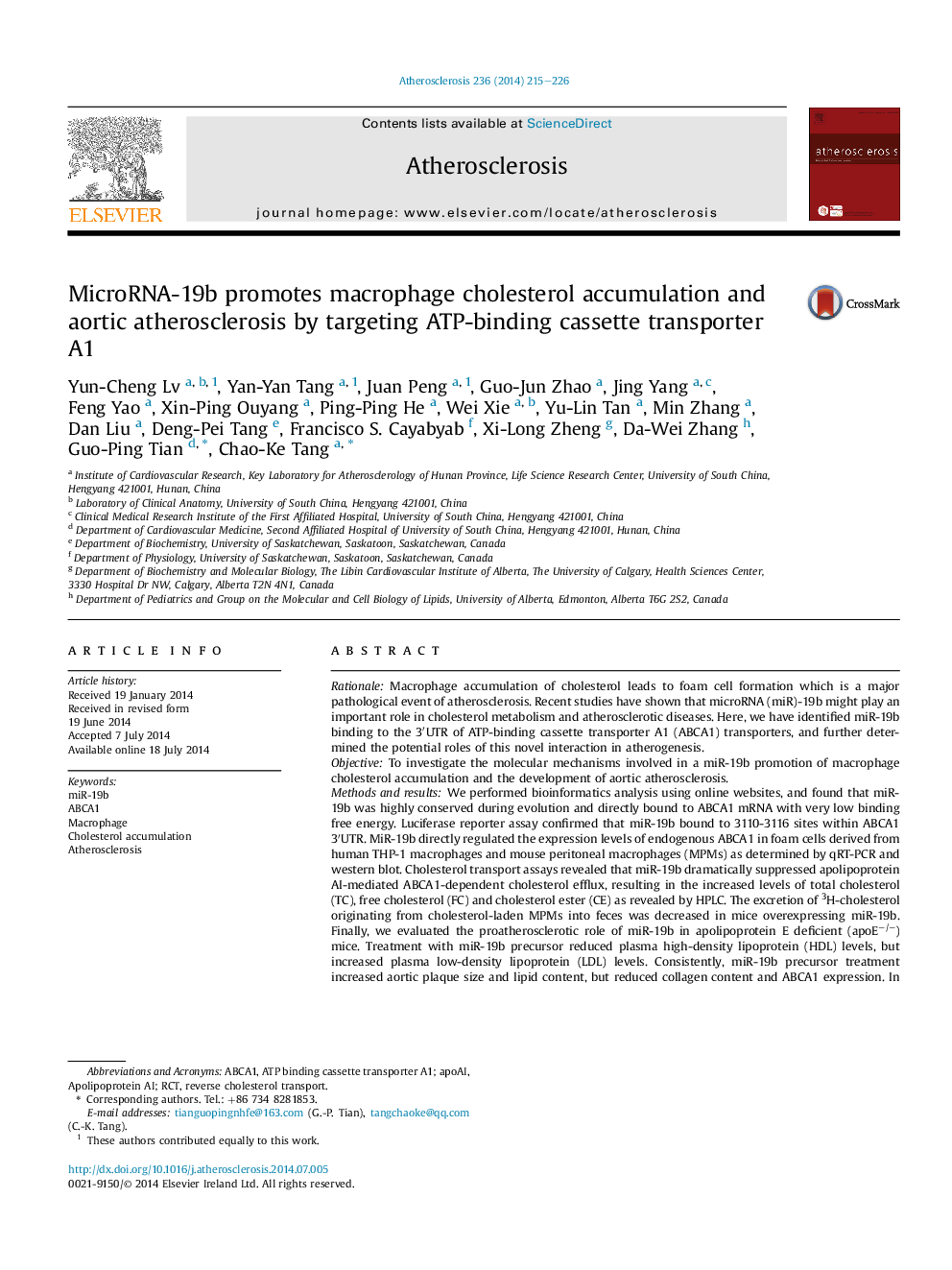| Article ID | Journal | Published Year | Pages | File Type |
|---|---|---|---|---|
| 5944835 | Atherosclerosis | 2014 | 12 Pages |
â¢MiR-19b has high conservation and putatively binds with ABCA1 3â²UTR.â¢MiR-19b directly targets ABCA1 3â²UTR and represses the expression of ABCA1.â¢MiR-19b blocks the efflux of macrophage cholesterol to apoAI.â¢MiR-19b impairs RCT and affects plasma lipid profile.â¢MiR-19b promotes the development of aortic atherosclerosis.
RationaleMacrophage accumulation of cholesterol leads to foam cell formation which is a major pathological event of atherosclerosis. Recent studies have shown that microRNA (miR)-19b might play an important role in cholesterol metabolism and atherosclerotic diseases. Here, we have identified miR-19b binding to the 3â²UTR of ATP-binding cassette transporter A1 (ABCA1) transporters, and further determined the potential roles of this novel interaction in atherogenesis.ObjectiveTo investigate the molecular mechanisms involved in a miR-19b promotion of macrophage cholesterol accumulation and the development of aortic atherosclerosis.Methods and resultsWe performed bioinformatics analysis using online websites, and found that miR-19b was highly conserved during evolution and directly bound to ABCA1 mRNA with very low binding free energy. Luciferase reporter assay confirmed that miR-19b bound to 3110-3116 sites within ABCA1 3â²UTR. MiR-19b directly regulated the expression levels of endogenous ABCA1 in foam cells derived from human THP-1 macrophages and mouse peritoneal macrophages (MPMs) as determined by qRT-PCR and western blot. Cholesterol transport assays revealed that miR-19b dramatically suppressed apolipoprotein AI-mediated ABCA1-dependent cholesterol efflux, resulting in the increased levels of total cholesterol (TC), free cholesterol (FC) and cholesterol ester (CE) as revealed by HPLC. The excretion of 3H-cholesterol originating from cholesterol-laden MPMs into feces was decreased in mice overexpressing miR-19b. Finally, we evaluated the proatherosclerotic role of miR-19b in apolipoprotein E deficient (apoEâ/â) mice. Treatment with miR-19b precursor reduced plasma high-density lipoprotein (HDL) levels, but increased plasma low-density lipoprotein (LDL) levels. Consistently, miR-19b precursor treatment increased aortic plaque size and lipid content, but reduced collagen content and ABCA1 expression. In contrast, treatment with the inhibitory miR-19b antisense oligonucleotides (ASO) prevented or reversed these effects.ConclusionMiR-19b promotes macrophage cholesterol accumulation, foam cell formation and aortic atherosclerotic development by targeting ABCA1.
